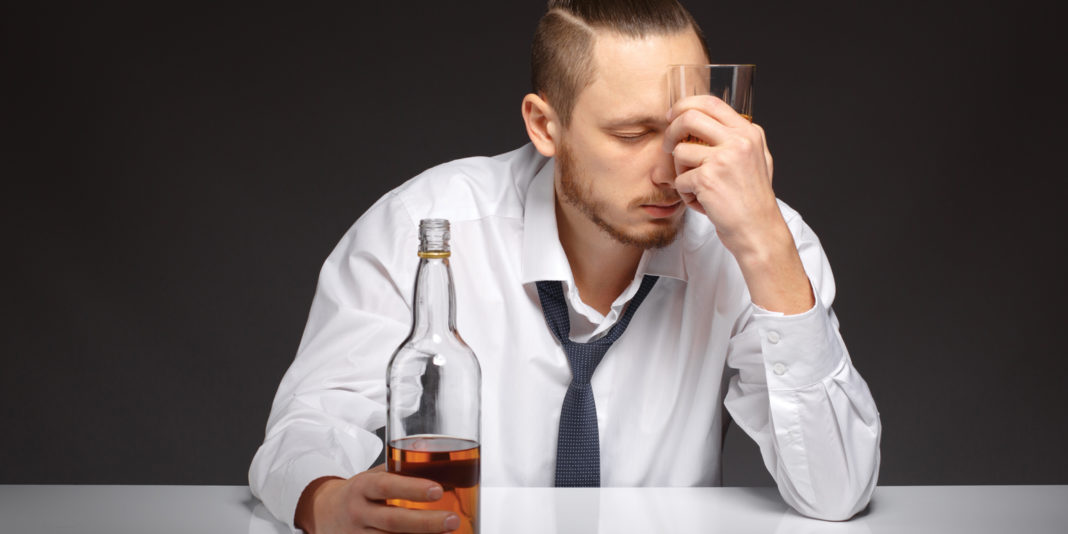Think about those who self-medicate with alcohol and drugs for depression/anxiety and plenty of celebrity examples spring readily, and tragically, to mind: singers and musicians like George Michael, Amy Winehouse, Prince and Michael Jackson, actor Heath Ledger and comedian Robin Williams – just some of the high-profile, talented people who have lost their battles with addiction and/or mental illness.
They are mostly men, and there is often a crossover (sometimes referred to as dual diagnosis, or co-existing problems [CEP]) between mental health and addictions.
These stars either self-medicated with alcohol or drugs to cope with depression/anxiety or, conversely, their addiction/drug experiences triggered off depression, anxiety and even psychosis.
But away from the headlines, there are plenty of ordinary, non-famous people also doing this to cope with everyday life.
Male/female numbers evening up
With New Zealand’s sky-high suicide rate dominated by men (three-quarters of the 606 suicides last year were male), it seems plausible to conclude that they are also more likely to self-medicate than women to cope with depression/anxiety.
Waikato addiction nurse practitioner Louise Leonard says that, 15 years ago, this was perhaps true but, these days, women have caught up with men.
The number of bed admissions to the medical detox centre where she works is roughly equal, she says.
“We used to say men were more vulnerable and that men were often self-medicating… but I think women have caught up. Families are under pressure, and it’s impacting equally.”
Professor Doug Sellman, a clinical psychiatrist who is director of Otago University’s National Addiction Centre, says self-medicating with alcohol and other drugs can seem to offer those with experience of depression and/or anxiety an easy, albeit temporary, fix.
“If you’re low and getting up to normal, that’s self-medication and if you’re normal and going up to high that’s more social, recreational use.”
Nowadays health professionals recognise it is common for patients to have both mental health and addiction problems, says Leonard, who prefers the term ‘co-existing problems’.
True ‘dual diagnosis’ would involve a full-blown diagnosis, so meeting criteria according to a diagnostic manual for mental health and drug and alcohol addiction, she says.
“These days we know that most people who present have mental health and addiction problems, so they may not be at a level that they necessarily will have a diagnosis but it’s causing problems in both domains.”
Sellman says a “well-thought-out clinical interview” should be able to identify what the primary problem is.
There are a number of key steps to go through and he advocates a trial period of abstinence in the first instance. “Three-quarters of [the depression/anxiety] will go away [during the abstinence], but a quarter of it doesn’t”.
“Those are people who do have a more underlying depression/anxiety problem being primarily caused by some other factor.”
Looking at family history can provide clues to whether there is a stronger family history of depression/anxiety or one of alcoholism.
It is an “inexact science”, he admits, and the best and most proactive option is a period of abstinence.
In 2007 the Te Pou report on dual diagnosis concluded that mental health and alcohol and drug services in New Zealand did not reflect an integrated approach to services for people with experience of both mental illness and alcohol and drug addiction.
More than a decade later, a frequent criticism of the health system is that people with both issues are falling through the gap.
National inquiry underway
A national mental health and addiction inquiry is currently underway to investigate this, with a six-person panel of experts making 25 visits to towns and cities across the country. Its findings won’t be heard until after it wraps up in October. However, inquiry chair, Professor Ron Paterson, was recently reported as saying that one of the common themes of the meetings so far was that mental health and addiction services are often fragmented.
Doug Sellman and Louise Leonard feel things are improving for people with CEP.
Sellman first identified people ‘falling through the gap’ more than three decades ago when he started studying this area. Since then things have improved, he says.
“I think there is greater awareness amongst mental health clinicians, of these secondary conditions, that alcohol and other drugs can produce psychiatric symptoms that look exactly like the primary diagnosis like major depression or a manic episode or a psychotic condition.
“There is [also] greater awareness now amongst clinicians in the addiction sector of the reality of primary disorders, that you can have these two co-existing, but there will be these 25 per cent of people who, even with abstinence, will continue to have these symptoms and they’re going to need other forms of treatment.
“There’s greater acceptance and awareness of that. So I think it’s slowly improving, over time.”
Services “are stretched”, admits Leonard, particularly as people are presenting with “more and more complex issues”.
“I always say to clients, to patients, that it’s a matter of hanging in there. If you’re determined, you will be seen, you will be properly assessed, you will have a treatment plan developed, but these things don’t necessarily happen overnight.”
But she agrees that there’s more understanding among health professionals about both issues.
“These days we have the view that any door is the right door, that’s easier said than done but whether you’re presenting to a mental health service or a drug and alcohol service you should still eventually end up in the right place.
“Services have got better and clinicians have become more skilled at recognising both, but we’re certainly not in a perfect world.”
Crucially people presenting with these issues need the help of an advocate.
“Families can’t do it for you [but] whether it’s their family, or a friend or whoever, they need someone to be supporting them as they present for treatment and not going away, being determined. I think it’s that persistence that helps.”
Both Leonard and Sellman say that, for anyone seeking help with CEP, the best place to start is with their GP.
“In the majority of cases, it’s good advice,” says Sellman. “These days GPs are being better trained in this area and know when to refer, and can do that initial sorting things out – ‘what’s the likelihood of this being a primary mental health problem or a primary alcohol or drug addiction’.”
It’s crucial to encourage people to get past any shame or embarrassment they might feel about their addictions or mental health issues, adds Leonard. “Often that’s why people don’t present for help, people just battle on and try and cope.”
Where to get help:
If you are worried about your or someone else’s mental health, the best place to get help is your GP or local mental health provider. However, if you or someone else is in danger or endangering others, call police immediately on 111.
Need to talk? Free call or text 1737 any time for support from a trained counsellor.
Or if you need to talk to someone else:
Lifeline – 0800 543 354
Suicide Crisis Helpline – 0508 828 865 (0508 TAUTOKO)
Youthline – 0800 376 633 or free text 234
Kidsline – 0800 54 37 54 (for under 18s)
What’s Up – 0800 942 8787 (for 5–18 year olds 1pm–10pm weekdays and 3pm–10pm weekends)
Depression Helpline – 0800 111 757 or free text 4202
Samaritans – 0800 726 666
OUTLine NZ – 0800 688 5463
Healthline – 0800 611 116
Source: Health Central





















